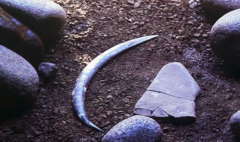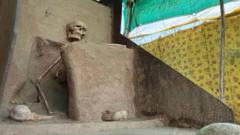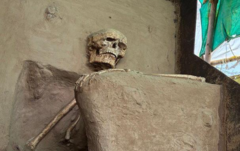A recent study sheds light on the gruesome discovery at Charterhouse Warren, where skeletal remains indicate that victims of a massacre were likely eaten in a disturbing ritual. This finding alters the understanding of Bronze Age practices in Britain.
Archaeological Study Reveals Cannibalism in Bronze Age Mass Grave

Archaeological Study Reveals Cannibalism in Bronze Age Mass Grave
Research indicates that 37 individuals found in a Bronze Age grave in England may have been ritualistically slaughtered and consumed.
In a startling revelation, an archaeological study has unveiled the shocking practices surrounding a Bronze Age mass grave located at Charterhouse Warren in southwest England. Researchers, led by Rick Schulting from Oxford University, have determined that the remains of at least 37 individuals, discovered over five decades ago, point to a harrowing tale of ritual slaughter and potential cannibalism.
The remains, which were scattered across a natural pit that is about 50 feet deep, show telltale signs of violent deaths, including broken bones and cutting marks resembling butchery. These findings, published in the eminent journal Antiquity, suggest that what was once thought to be a simple gravesite could actually be the scene of a ceremonial feast following a massacre.
The original discovery of the bones in 1970 by cave explorers has remained relatively obscure within the broader narrative of British archaeology until the recent intensive study prompted a reevaluation of the site's significance. Professor Schulting expressed his surprise regarding the findings, noting this severe action was “completely unexpected” and deviated from what historians have recorded about the archeological practices of that era.
Dating between 2210 and 2010 B.C., the Charterhouse Warren mass grave now poses profound questions about the social customs of Bronze Age Britain. The evidence suggests that these rituals may indicate a complex understanding of death, power, and community in a period when such acts were thought to be rare or non-existent among early European civilizations.
As archaeologists delve deeper into understanding the nuances of this grim chapter, the Charterhouse Warren site now stands as a crucial indicator of the darker aspects of prehistoric societal interactions, urging a reassessment of ethical and ritualistic behaviors in ancient cultures.






















